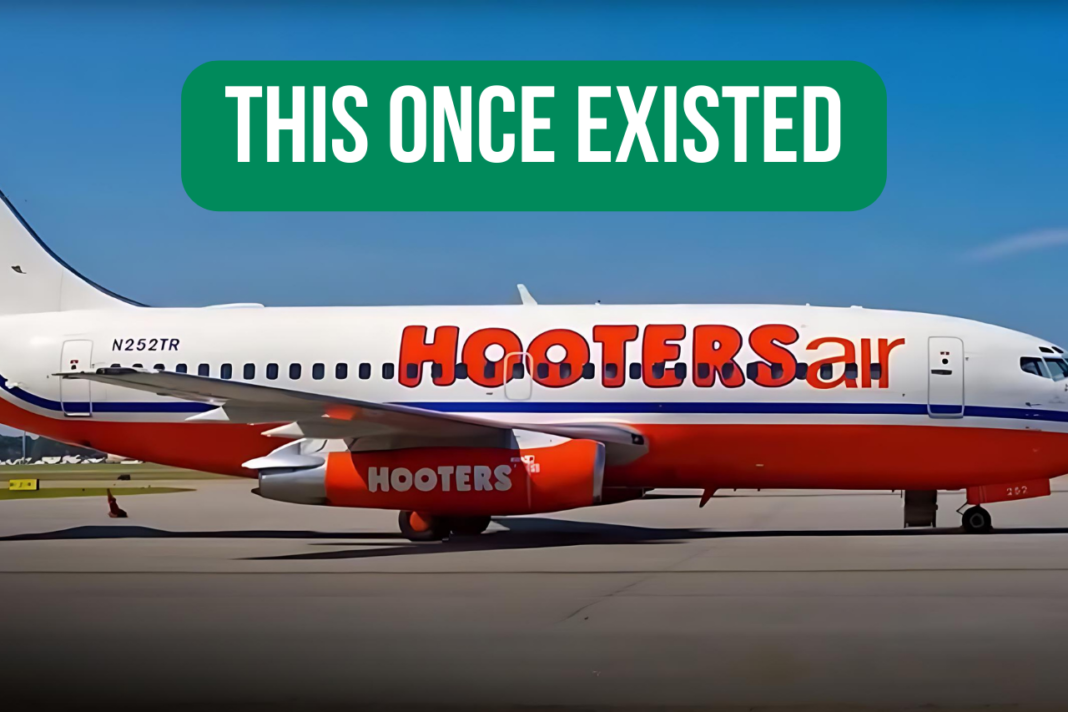Hooters Air. The name alone conjures images of chicken wings, cold beer, and, of course, the iconic Hooters girls. But in 2003, Hooters took a bold leap from the restaurant industry to the skies, launching an airline that promised a unique blend of casual dining charm and air travel convenience. It was a daring move that seemed like a match made in heaven. After all, who wouldn’t want to enjoy a mile-high experience with a side of Hooters hospitality?
The Concept of Hooters Air
The brainchild of Hooters owner Robert Brooks, Hooters Air took to the skies to merge brand recognition with a niche market appeal. The idea was to target leisure travellers, especially golfers, flying them to popular destinations like Myrtle Beach, South Carolina. The airline offered flat-rate deals at $129 each way, promising a fun and affordable travel experience.
Hooters Air’s fleet featured planes adorned with the recognizable Hooters logo and the famous orange and white colour scheme. Onboard, passengers were treated to extra legroom in the “club class” section and attended by professional flight attendants and Hooters girls. These iconic waitresses performed safety procedures, served meals and drinks, and sold Hooters merchandise mid-flight. It was a flying billboard for the brand, combining the restaurant’s allure with the practicality of air travel (Explore) (Scoop.it).
The Fall of Hooters Air
Despite its initial buzz and novelty, Hooters Air faced significant challenges. The niche market appeal limited its customer base primarily to leisure travellers, excluding the more lucrative business travellers and families. Competing against established carriers like Southwest and JetBlue, which offered more routes and frequent flyer programs, proved difficult.
The airline industry itself was undergoing turbulent times. In the wake of the September 11 attacks, many were hesitant to fly, and rising fuel prices, exacerbated by natural disasters like Hurricane Katrina, increased operational costs. Hooters Air struggled to maintain profitability and achieve a high load factor, meaning many flights departed with numerous empty seats (Explore) (Scoop.it).
The final blow came with bad publicity and financial losses. By the time Hooters Air suspended services in January 2006, it had incurred a staggering $40 million loss. The venture officially ceased operations in April 2006, marking the end of a short-lived but unforgettable chapter in aviation history (Explore).
Other Failed Airline Ventures
Hooters Air isn’t alone in the annals of failed airline ventures. Major brands have attempted to break into the airline industry with varying success. Remember PepsiCo’s PepsiJet or the brief existence of MGM Grand Air? These ventures, like Hooters Air, highlight the difficulty sustaining an airline. Even giants like Virgin America struggled despite offering innovative services and strong brand loyalty.
The Difficulties of Operating an Airline
Running an airline is a glamorous yet treacherous business. The allure of flying high with a brand name is tempting. Still, the reality involves navigating complex logistics, stringent regulations, high operational costs, and volatile market conditions. It’s an industry where even the slightest misstep can lead to colossal financial losses.
Would Nike or Adidas Benefit from Their Own Airlines?
If Nike or Adidas were to venture into the airline industry, they would bring considerable brand power and loyal customer bases. Imagine an airline where you could earn frequent flyer miles and redeem them for the latest sneakers! However, they would face the same challenges as Hooters Air: high competition, significant operational costs, and the need to sustain long-term profitability. While the idea of flying in a “swoosh” or on a plane adorned with three stripes sounds exciting, the practicalities of the airline business might make even these giants think twice.
In The End, It Doesn’t Even Matter.
Hooters Air was a bold, innovative venture that combined the fun, casual dining experience of Hooters with the excitement of air travel. Despite its ultimate failure, it remains a fascinating case study in brand extension and niche marketing. The airline industry is sexy and appealing, but it’s also incredibly tough to crack. So, while we mourn the loss of Hooters Air, we can’t help but admire the audacity and creativity that took those wings to the sky.
Read More: Kai Cenat: The Truman Show Brought To Life By A New Generation Of Superstars






